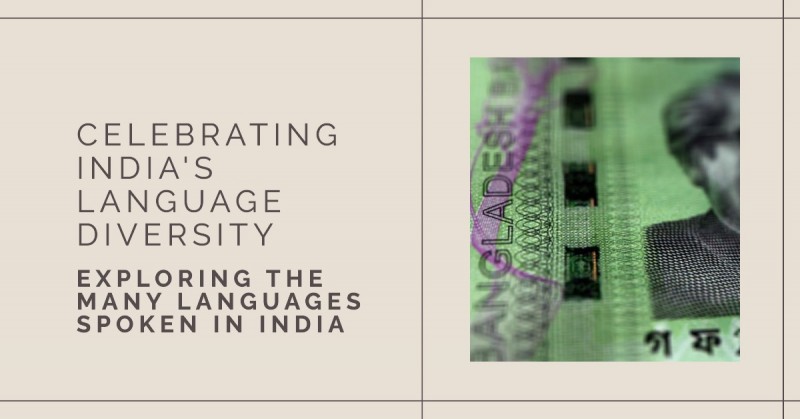
In a linguistically diverse country like India, the number of languages spoken is a topic of great interest. As of 2023, India continues to amaze the world with its vast linguistic landscape. With its rich cultural heritage and diverse population, India boasts a remarkable number of languages. In this article, we will delve into the intricacies of India's linguistic diversity, exploring the various languages spoken across the country and shedding light on their significance. Join us on this linguistic journey through the multifaceted tapestry of India.
Hindi: The National Language
As the national language of India, Hindi holds a prominent position in the linguistic landscape. It serves as a means of communication and connection between people from different regions. Hindi, written in the Devanagari script, acts as a unifying force, fostering a sense of national identity.
Regional Languages
India is a mosaic of diverse cultures, each with its own unique language. Apart from Hindi, there are numerous regional languages spoken across the country. Some of the prominent regional languages include:
Bengali
Spoken primarily in the eastern state of West Bengal, Bengali is one of the most widely spoken languages in India. It has a rich literary tradition and is known for its poetic elegance and lyrical beauty.
Tamil
Tamil, with its ancient origins, is the primary language of the southern state of Tamil Nadu. It is renowned for its classical literature and is among the longest-surviving classical languages in the world.
Telugu
Telugu, predominantly spoken in the southern state of Andhra Pradesh, is renowned for its rich literary history and vibrant cultural heritage. It has a significant influence on the arts, music, and cinema of the region.
Marathi
Marathi, the language of the western state of Maharashtra, holds great importance in the cultural and literary spheres. It has a distinct literary tradition and has produced notable poets, writers, and playwrights.
Gujarati
Gujarati, spoken in the western state of Gujarat, is known for its rich literary heritage and contribution to the world of poetry and drama. It has a significant presence in business and commerce as well.
Punjabi
Punjabi, the language of the northwestern state of Punjab, is famous for its lively folk traditions and passionate poetry. It is also widely spoken in the diaspora, particularly in countries like the United Kingdom, Canada, and the United States.
Tribal Languages
India is also home to a wide range of tribal communities, each with its own distinct language and cultural identity. These tribal languages play a crucial role in preserving the cultural heritage of indigenous communities. Some notable tribal languages spoken in India include:
These languages, along with many others, contribute to the linguistic mosaic of India, showcasing the country's remarkable diversity.
The Significance of India's Linguistic Diversity
India's linguistic diversity is more than just a testament to the country's cultural richness; it also plays a pivotal role in preserving India's heritage and promoting inclusivity. The diverse languages reflect the pluralistic ethos of the nation, highlighting the coexistence of various cultures and identities. Moreover, linguistic diversity serves as a bridge between generations, facilitating the transmission of knowledge, traditions, and values.
Language Preservation and Revival Efforts
Recognizing the importance of preserving endangered languages, the Indian government has undertaken several initiatives to protect and promote linguistic diversity. Efforts include:
Conclusion
India, with its vast linguistic landscape, is a testament to the beauty of diversity. From the national language of Hindi to a plethora of regional and tribal languages, the country showcases a remarkable linguistic tapestry. Each language holds its unique significance and contributes to India's cultural wealth. By embracing and preserving this linguistic diversity, India celebrates its pluralistic identity and ensures the continuity of its rich heritage. As we navigate the dynamic world of languages, let us appreciate the invaluable role they play in shaping our society and connecting us to our roots.
National Water Awards-4th Presentation by Vice President on June 17
Defence Ministry OKs US Predator Drone Deal, Awaiting CCS Clearance
IT Ministry and Google collaborate to enhance online cyber safety